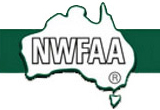3 Technical Specifications - Wood Floors
A guide to selecting and specifying attributes which you desire to incorporate in your Wood Floor System.
This guide seeks to provide guidance to Architects, Engineers, Designers, Builders Specifiers and Home Owners in the choices which are available when selecting and specifying a Wood Floor System.
This guide seeks to highlight a combination of elements, from which a selection is made, in designing a Wood Floor “System” for Parquet and Tongue and Grooved Timber Floors and Pre-Finished Engineered Plank Floors that are designed to meet your needs.
QUESTIONS
3.01 Wood Floors are Manufactured From Natural Timber
* TIMBER is a RENEWABLE RESOURCE... read more> > >
3.02 What is a Wood Flooring System
* Wood Floors come in many different systems and include the following... read more> > >
3.03 Pattern & Design of Your Wood Floor
* Locations close to a large body of water will be subject to more movement... read more> > >
3.04 Client Expectations
Problems occur in any industry when client expectations are not met.
In crafting this guide, it is intended that designer and client alike shall give due consideration to and acquire a balanced understanding of, those aspects of good floor design that can achieve the most rewarding satisfaction for each and every client.
CONTENT:
3.05 Construction Methods
CONTENT:
* 3.05a PIER AND BEAM CONSTRUCTION read more> > >
* 3.05b CONCRETE SLAB CONSTRUCTION read more> > >
* 3.05c CONCRETE SLAB CONST. WITH STRUCTURAL PLYWOOD SUB BASE read more> > >
3.06 Pattern & Design of Your Wood Floor
* 3.06 SUB FLOOR VENTILATION & 3.06a SITE DRAINAGE read more> > >
3.07 Natural Movement
* As indicated earlier, being hygroscopic, timber continues to move... read more> > >
